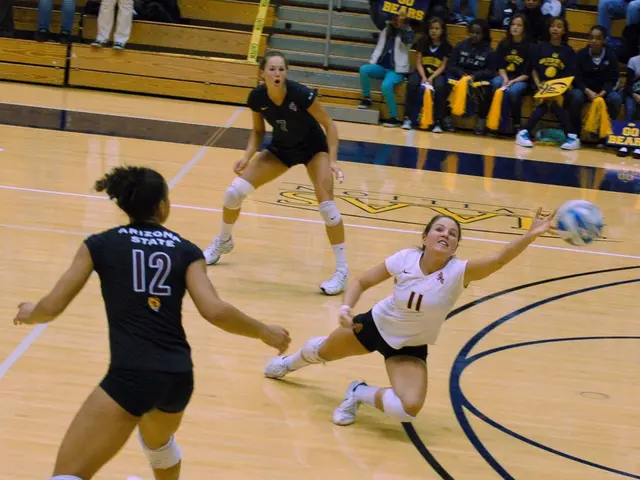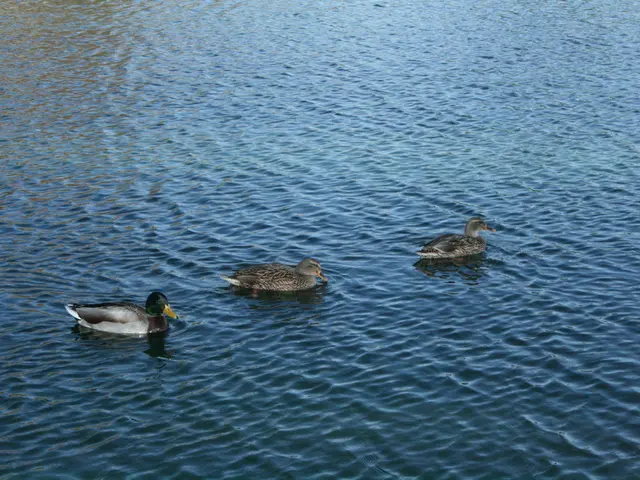Vienna's decision leads to the outcome.
Vienna Election Results: A New Landscape Takes Shape
In the recent Vienna elections, the Socialist Party of Austria (SPÖ) snatched the top spot with approximately 39.5% of the votes. However, they suffered a slight decrease compared to the 2020 results. On the other hand, the Freedom Party of Austria (FPO) made a significant leap forward, capturing a whopping 20.8% of the votes. The Greens managed to hold their ground, maintaining almost their entire share with 14.2%.
The race for fourth place between NEOS and the Austrian People's Party (OVP) is tight. The remaining postal votes will likely decide the winner once they are counted on Monday. On election night, both NEOS and OVP were neck and neck with 9.8% and 9.7%, respectively.
According to projections by the Foresight Institute and APA/ORF, including postal vote estimates with a 99.8% turnout, the SPÖ is estimated at 39.5%, the FPO at 20.4%, and the Greens at 14.5%. The battle for fourth place persists, with NEOS (9.9%) and OVP (9.7%) vying for the spot.
The SPÖ, a Coalition Contender
The SPÖ (according to the Foresight projection) has 43 seats. They could continuing their partnership with NEOS (future 10 seats) or enter into a collaboration with the OVP (also 10 seats) or the Greens (15 out of the total 100 seats in the city council). However, a majority with the FPO (22 seats) is not an option for the SPÖ due to political differences.
The Fall of KPO and Strache
The KPO, alongside the LINKS list, and Team Strache both failed to exceed the 5% hurdle, garnering 4.0% and 1.1%, respectively.
Compared to the 2020 results, the SPÖ lost 2.2 percentage points, dropping to 41.6%. The OVP suffered a significant loss, plummeting 10.7 percentage points from its previous 20.4%. The FPO made a record gain of 13.2 points, almost tripling its vote share from the Ibiza scandal low of 7.1%. The Greens lost a mere 0.3 points, maintaining their 2020 result of 14.8%. NEOS also saw a gain of 2.5 points, rising from 7.5% in 2020.
In the aftermath of the 2025 Vienna election results, it is likely that the SPÖ will lead the next government and form a coalition with the Greens as their primary partner. NEOS could potentially join the coalition if a broader alliance is desired. The FPO's strong second place is unlikely to translate into a coalition with the SPÖ due to political differences. The weakened ÖVP finds itself in a marginal position, making a coalition with the SPÖ unlikely as well.
In conclusion, the most probable coalition options are:- SPÖ + Greens (most straightforward majority)- SPÖ + Greens + NEOS (broad coalition for stability)
These potential coalitions reflect the current political landscape post-2025 Vienna election results.
- Amid the backdrop of the Vienna election results, the Socialist Party of Austria (SPÖ) stands poised to lead the next government, potentially forging alliances with the Greens or a broader coalition that includes NEOS, depending on their political strategy.
- The migration, war-and-conflicts, and crime-and-justice policies might significantly shape the future coalition as the SPÖ and Greens hold contrasting views on such matters, especially when compared to the Freedom Party of Austria (FPO).
- The victory of the SPÖ in the elections also garnered attention for the general news outlets, as the party managed to maintain a majority, despite suffering a slight decrease in votes compared to 2020.
- Following the Vienna election results, car-accidents and fire safety may become key issues in policy-and-legislation discussions, as political parties work to address pressing concerns for the people of Vienna.
- As the Austrian People's Party (OVP) and NEOS find themselves in tight competition for fourth place, it remains to be seen whether they will be able to make a difference in shaping the city's policy and legislation in the coming years, absent a formal coalition with the SPÖ.








